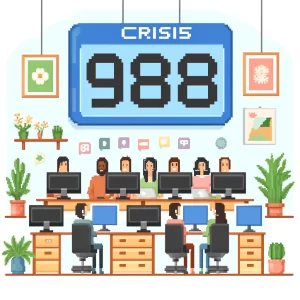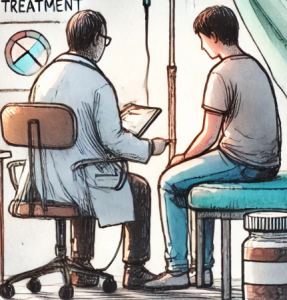
A New Dawn in Suicide Prevention: Australia’s Strategy for Saving Lives
When we talk about public health, one of the most pressing and heart-wrenching challenges we face is the ongoing battle against suicide. With over 700,000 lives lost to suicide each year globally (an amount equal to the population of Denver, Colorado), it’s a crisis that touches communities in every corner of the world. In Australia, the fight against suicide has taken center stage with a renewed focus on prevention, driven by the efforts of the National Suicide Prevention Office (NSPO).
Understanding the Context: The State of Suicide in Australia
Australia has long been at the forefront of suicide prevention efforts, being one of the first countries to develop national suicide prevention policies. Despite this, the country still grapples with high suicide rates, particularly among men aged 15-49. In 2022 alone, 3,249 Australians died by suicide, marking an alarming age-standardized rate of 12.3 per 100,000 people. This statistic underscores the critical need for effective, coordinated strategies that address the root causes of suicidal behavior.
In response, the Australian government has undertaken a comprehensive environmental scan to evaluate and reshape its suicide prevention strategies. This initiative, led by the NSPO and conducted by the University of Melbourne’s Centre for Mental Health, seeks to understand the current landscape of suicide prevention activities and identify opportunities for improvement.
A Period of Transition: Moving Towards a Unified Strategy
The environmental scan revealed that Australia’s suicide prevention efforts are extensive but fragmented. The government has implemented a range of policies, programs, and services aimed at preventing suicide, but these efforts have often been selective or indicated, targeting specific at-risk populations rather than the general public. This approach, while beneficial, lacks the universality needed to create widespread protective factors across the entire population.
One of the significant findings of the scan is the need for a “whole-of-government” approach to suicide prevention. This means that every level of government—federal, state, and local—must work together, not just within the health sector but across all sectors, including education, justice, housing, and social services. Such an approach acknowledges that suicide is not just a health issue but a societal one, influenced by various social determinants like economic stability, housing security, and access to education.
The Role of Lived Experience in Shaping Policy
A particularly progressive aspect of Australia’s new strategy is the emphasis on lived experience. The voices of those who have been directly affected by suicide—whether through personal experience or the loss of a loved one—are being integrated into policy development and service delivery. This approach ensures that the strategies implemented are not only evidence-based but also deeply empathetic and responsive to the needs of those most at risk.
For instance, the National Suicide Prevention Leadership and Support Program (NSPLSP) includes projects specifically focused on lived experience, supporting peer-led initiatives and fostering community-based responses. These initiatives aim to provide real-time support and create safe spaces where individuals can seek help without fear of judgment or stigma.
Breaking Down Barriers: Making Suicide Prevention Accessible
Accessibility is another crucial focus of Australia’s evolving suicide prevention strategy. The scan highlighted the importance of making mental health and suicide prevention services available to everyone, regardless of their location or socioeconomic status. Digital services have emerged as a key tool in this effort, offering 24/7 access to support through various platforms, including phone lines, online chats, and mobile apps.
These digital services are designed to be inclusive, catering to diverse groups such as young people, First Nations peoples, and veterans. However, the scan also identified challenges in promoting these services and ensuring they are kept up-to-date and user-friendly. Continuous evaluation and improvement are necessary to maintain their effectiveness and reach.
The Future of Suicide Prevention in Australia
Australia’s commitment to suicide prevention is clear, but there is much work to be done. The environmental scan has provided a roadmap for future efforts, emphasizing the need for a unified strategy that involves every sector of society. This includes adopting a shared understanding of suicide, addressing the social determinants of health, and strengthening protective factors across the population.
One promising avenue is the development of a National Suicide Prevention Workforce Strategy, which aims to build capacity across both clinical and non-clinical sectors. This strategy will ensure that all those involved in suicide prevention, from healthcare professionals to community leaders, are equipped with the knowledge and skills needed to support those at risk.
Moreover, the NSPO is working on a National Outcomes Framework that will provide a consistent way to measure progress and hold all stakeholders accountable. This framework will be critical in ensuring that the new strategies are not only implemented but are also effective in reducing suicide rates across the country.
Why This Matters: The Broader Implications
The findings from Australia’s environmental scan are not just relevant to Australians—they offer valuable lessons for other countries grappling with similar challenges. The focus on a whole-of-government approach, the inclusion of lived experience, and the push for accessibility and accountability can serve as a model for suicide prevention efforts worldwide.
As we move forward, it is essential to remember that suicide is preventable. With the right strategies, resources, and collective will, we can create a society where everyone has the support they need to navigate life’s challenges. Australia’s efforts, guided by the NSPO, represent a beacon of hope in this ongoing struggle, offering a blueprint for saving lives and fostering wellbeing.
Join the Conversation
What are your thoughts on Australia’s approach to suicide prevention? Have you or someone you know been impacted by these issues? Share your experiences and ideas in the comments or on social media using #SuicidePreventionAustralia. Your voice can help shape the future of suicide prevention.
Be Part of the Change – Get Weekly Updates!
Stay informed and connected. Subscribe for free and share this blog to make a difference in public health with others. If you liked this blog, please share it! Your referrals help This Week in Public Health reach new readers.



